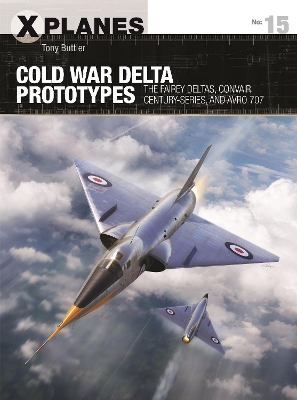X-Planes
1 primary work • 2 total works
Book 11
While World War II raged, pioneering aircraft and engine designers were busy developing the world's first practical jet-powered research aircraft to test and prove the new technology. This book examines the aircraft that paved the way for Germany's Me 262 and Britain's Meteor - the world's first jet fighters.
Throughout the war, Germany, Italy and Britain engaged in top-secret jet programmes as they raced to develop the airpower of the future. Various experimental aircraft were trialled in order to achieve the goal of producing an effective engine and fighter that could harness the potential of the jet power. These included the German Heinkel He 178 research aircraft and Heinkel He 280 jet fighter prototype, the famed British E.28/39 research aircraft built by Gloster Aircraft as well as the stillborn E.5/42 fighter and E.1/44 Ace fighter prototype, and finally the remarkable Italian Caproni-Campini N.1/CC 2 research aircraft.
Illustrated throughout with full-colour artwork and rare photographs, this fascinating study examines the fore-runners to the military jet age.
Throughout the war, Germany, Italy and Britain engaged in top-secret jet programmes as they raced to develop the airpower of the future. Various experimental aircraft were trialled in order to achieve the goal of producing an effective engine and fighter that could harness the potential of the jet power. These included the German Heinkel He 178 research aircraft and Heinkel He 280 jet fighter prototype, the famed British E.28/39 research aircraft built by Gloster Aircraft as well as the stillborn E.5/42 fighter and E.1/44 Ace fighter prototype, and finally the remarkable Italian Caproni-Campini N.1/CC 2 research aircraft.
Illustrated throughout with full-colour artwork and rare photographs, this fascinating study examines the fore-runners to the military jet age.
At the dawn of the supersonic jet age, aircraft designers were forced to devise radical new planforms that suited the new power of the jet engine. One of the most successful was the delta wing.
Although Gloster produced the delta wing Javelin, and Boulton Paul –its P.111 research aircraft – Fairey and Avro were the champions of the delta in Britain. Meanwhile in America, with the exception of Douglas’s Navy jet fighter programmes, Convair largely had the delta wing to itself. These development lines, one on each side of the Atlantic, had essentially the same objective – to produce high-speed fighter aircraft. In Britain, the Fairey Delta 2 went on to break the World Air Speed Record in spectacular fashion, but it failed to win a production order. In contrast Convair received major orders for two jet fighter types and one jet bomber. At the same time, the British Avro company built the 707 family of research aircraft, which led to the famous Vulcan, to show how the delta wing could be adopted for a highly successful subsonic bomber.
This book examines the development of the delta wing in Britain and America, and the way in which experimental aircraft like the Fairey Deltas proved their potential and versatility. In Britain it covers the Fairey Delta 1 and Fairey Delta 2, the proposed Fairey Delta Rocket Fighter and huge Delta 3 long range interceptor, and the Avro 707. On the American side, it examines the Convair XF-92 and XF-92A, the development of the Delta Dagger/Delta Dart family, and the Convair Sea Dart – the world’s only supersonic seaplane.
Although Gloster produced the delta wing Javelin, and Boulton Paul –its P.111 research aircraft – Fairey and Avro were the champions of the delta in Britain. Meanwhile in America, with the exception of Douglas’s Navy jet fighter programmes, Convair largely had the delta wing to itself. These development lines, one on each side of the Atlantic, had essentially the same objective – to produce high-speed fighter aircraft. In Britain, the Fairey Delta 2 went on to break the World Air Speed Record in spectacular fashion, but it failed to win a production order. In contrast Convair received major orders for two jet fighter types and one jet bomber. At the same time, the British Avro company built the 707 family of research aircraft, which led to the famous Vulcan, to show how the delta wing could be adopted for a highly successful subsonic bomber.
This book examines the development of the delta wing in Britain and America, and the way in which experimental aircraft like the Fairey Deltas proved their potential and versatility. In Britain it covers the Fairey Delta 1 and Fairey Delta 2, the proposed Fairey Delta Rocket Fighter and huge Delta 3 long range interceptor, and the Avro 707. On the American side, it examines the Convair XF-92 and XF-92A, the development of the Delta Dagger/Delta Dart family, and the Convair Sea Dart – the world’s only supersonic seaplane.

